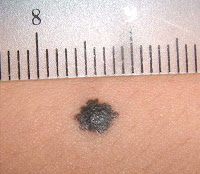Dear Colleagues,
Pityriasis alba, a disease of young children, is a superficial dermatitis which often presents in two stages: first the erythematous stage which over time developes into (the second) a whitish stage. In Iraq, we see, not infrequently, children with pityriasis alba-like patches that change over time into true vitiligo and then progress and spread to vitiligo in other parts. Many of these patients have a positive family history of vitiligo. At the initial visit it is sometimes is very difficult to tell parents whether their children have vitiligo or not and we fall into big dilemma.
I see many of these and treat them as vitiligo. They respond as well as as those we treat for pityriasis alba.
Question: I would like to ask our colleagues whether you have any similar observation? I intend to initiate a study about this problem shortly.
Khalifa Sharquie
Note: The current case on the classic VGRD site is also from Iraq. Please view it, too.
Baghdad, Iraq






